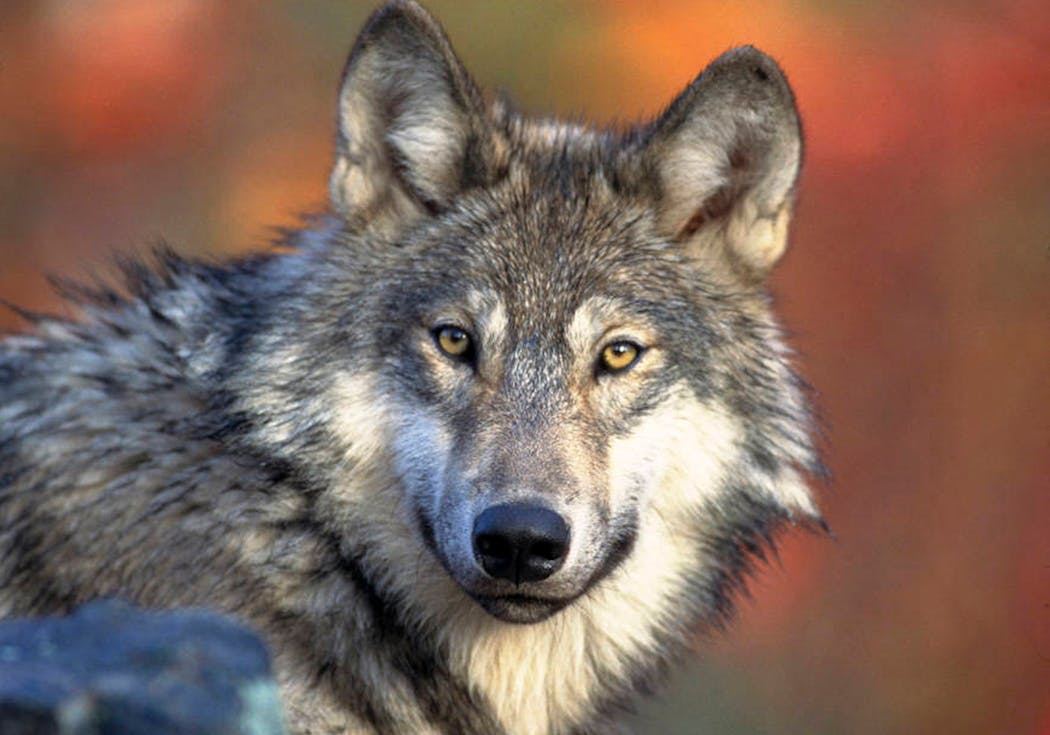Why is Minnesota the only mainland state with an abundance of wolves?
Listen and subscribe to our podcast: Via Apple Podcasts | Spotify | Stitcher
Long after wild wolves were wiped out of every other state in the "Lower 48," dozens of wolf packs were somehow able to hang on and survive in remote areas of northern Minnesota.
While Sharon Carlson of Andover has never heard Minnesota wolves howling or seen them in the wild, it's always impressed her that the state became the last refuge in the contiguous United States for the revered and reviled predators. But she's never understood how Minnesota came to be so important for the animals.
She turned to the Star Tribune for help, asking: Why is Minnesota the only state in the "Lower 48" that has an abundance of wolves? The question is part of the paper's Curious Minnesota project, a community-driven series fueled by the inquisitiveness of readers.
First, it's no longer true that Minnesota is the only state with an abundance of wolves. But it once was. By the 1930s and 1940s, wolves were eradicated everywhere else south of the Canadian border, aside from a handful that crossed an ice sheet to populate Michigan's Isle Royale. Considering the animals a nuisance and a threat, most states, including Minnesota, offered bounties to hunters and trappers to kill all they could find.
But northern Minnesota was so sparsely populated that there was enough land and prey for hundreds of wolves to survive even as hunters targeted them, said Dan Stark, large carnivore specialist for the Minnesota Department of Natural Resources (DNR).
After wolf populations reached a low point in the 1950s and 1960s, at somewhere between 350 and 700 animals, Minnesota ended its wolf hunting seasons and stopped offering bounties for hides. That's when populations really started to recover, Stark said.
"There really wasn't access to the areas where the wolves were, and with no bounties or livestock to protect, there just weren't any incentives for conflicts. So they hung on," Stark said.
After wolves were given endangered species protections in the 1970s, their range began expanding. There are now about 2,700 wolves in Minnesota, nearly 1,200 in Wisconsin and nearly 700 in Michigan, all of which likely grew from Minnesota's surviving packs. Populations in all three states are considered stable and above federal recovery goals. Wolves were successfully reintroduced to Yellowstone National Park and the Rocky Mountain states in the 1990s, and have since exceeded population goals in some western states as well.
In October, federal wildlife officials announced they were delisting the wolf, removing endangered species protections. The decision will almost certainly be challenged in court. If it stands, each state would manage its own wolf population once again, potentially bringing back hunting seasons in Minnesota and allowing people to kill wolves that are attacking livestock or pets.
The DNR expects to complete its new management plan for the animals sometime next year.
---
If you'd like to submit a Curious Minnesota question, fill out the form below:
Read more Curious Minnesota stories:
Why is Minnesota more liberal than its neighboring states?
When you flush a toilet in the Twin Cities, where does everything go?
Was Minnesota home to nuclear missiles during the Cold War?
How did Minnesota become known as the 'Land of 10,000 Lakes?
Why does Minnesota have one of highest rates of volunteering in the U.S.?
What's the truth behind Minnesota's Kensington Runestone?
St. Paul vs. Minneapolis: Why can't the Twin Cities get along?
Are Minnesota's day-care costs really the highest in the nation?
When did wild bison disappear from Minnesota?
Does Minnesota really have the worst winters in the country?



